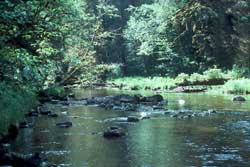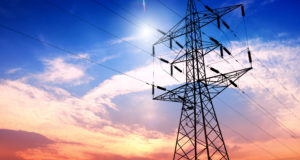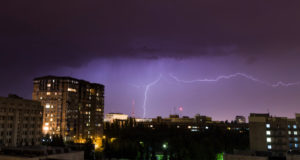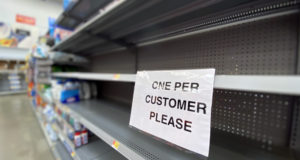 The most important thing you need in a survival situation is water, and if you haven’t laid in stores beforehand, it can be difficult to find. You need it not just for drinking, but brushing your teeth, washing, cleaning, and cooking. If you rely on city water – or even a well – that water is at the mercy of whatever Mother Nature or evil masterminds throw at your geographic region.
The most important thing you need in a survival situation is water, and if you haven’t laid in stores beforehand, it can be difficult to find. You need it not just for drinking, but brushing your teeth, washing, cleaning, and cooking. If you rely on city water – or even a well – that water is at the mercy of whatever Mother Nature or evil masterminds throw at your geographic region.
Water storage is an important first step to preparing your family for disaster. But you can only store so much water, and unlike food which can sometimes last for up to 30 years, water must be rotated much more frequently. So the next step is to know how and where to locate additional water supplies.
Ponds, Lakes, Streams, and Rivers
It is amazing how many people are oblivious to the resources around them. Where is the nearest pond? Lake? Stream or river? Knowing where these locations are is your first piece of reconnaissance. The next step is to answer the following questions:
● What is the easiest way to get there? Don’t think of just traveling by car, but also on foot, riding a bicycle, or using a pack animal such as a horse or mule. Figure out alternate routes for each of these methods too.
● Who owns the rights to the water? As Christians, we should have the same basic respect of other people’s property that we would like for our own. If possible get to know these people now. In an extended emergency situation you will probably need to work together to access the water in a long-term way anyway. Start forming the foundations of cooperation now.
● What other factors in the area will affect the water quality? Now is the time to take the 40-mile road trip all the way upstream to see what is running into that river, not when you have to hike it. Are there factory farms, big businesses with lots of chemical usage, or other environmental hazards that may be affecting the water?
● Is it flowing or still? If the water is standing water (such as a pond), it may be more prone to bacterial growth and insects (mosquitoes-ouch!) than a flowing body of water. What types of bacteria and insects are present and are you prepared to deal with them? Knowing what you are filtering can help ensure the method you choose is effective. And don’t forget mosquito netting and insect spray (or natural alternatives) in your preparedness plans.
● Does the water freeze over or dry up during any parts of the year? Just because the water is there and flowing in May, does not mean it will be in August or January.
If you find yourself in unfamiliar territory when “it” hits, then you will need to be able to gather this information without the benefit of foresight.
● Follow the animals. If you don’t even know where to start to look for water, consult the locals. And no, I am not talking about going up to a stranger with a gun (although that may be an eventual necessity too). Watch our furry friends to see where they go. Not only mammals, but birds, reptiles, and even insects tend to hang out near water since they need it just as much as we do.
● Where’s the party? Conversely, if you find water, and NO animal life (including fish), that should tell you something as well. This water is not quite right, and even with a good way to filter it, don’t make it your first choice. See if you can find a water source with a little more activity.
● Use your nose. If it stinks, there is a reason. Many bacteria give off a strong odor, as do many chemicals, fecal matter, and decaying flesh, all of which are big no-nos in your drinking water. Now that does not mean just because it looks and smells clean it is okay and you can dispense with cleansing it. But if it looks pretty bad from the start, then see if you can find a plan B.
● Check your almanac. It can be difficult to tell during one part of the year what to expect weather to do the rest of the time. Invest in a good almanac, maps with climate zones, or other tool to help you assess a new area and just carry it with you always whether you think you will need it or not.
Wells and Springs
If you are blessed enough to already have a well dug on your property, then you are one step closer to being off grid. But, as your first power outage will show you, just because you have a well does not mean you will instantly have water in a crisis. Here are the other things to consider.
● Backup power source to pump the well. Water in the ground does not do you much good. You need to be able to get it into your house and ultimately into you. If you are relying on a well, a backup power source is essential – or the ability to reroute it to a manual pump in some way (though of course you want to save yourself labor wherever you can).
● Way to purify the water in case of well contamination. Even the best well can become contaminated in a variety of ways. Test your water regularly, and have a purification system or know-how as part of your prepper skills and equipment.
● Knowledge of other sources of water on the property in case the well dries up. Even if you can still pump your water and it stays fresh and clean, it may eventually just dry up. In that event, it is good to know where other water is to dig a new well or be able to collect water in some other way.
Even though you might not have a well dug now, you may still have water on your property. You may want to consider finding and accessing it now if possible by hiring a hydrogeologist to locate water. You know the saying – “dig the well before you are thirsty.” But in case you just never get around to it, or if you happen to move the day before TEOTWAWKI, here are some ways to find and access water hidden underground.
● Follow the animals (again). Even if you can’t see the water, the animals know if its there. And if it is close to the surface and they can get at it – so can you.
● The grass is greener. If there is a spot that is especially lush and green (or even a little bit lush and green in the dessert) then it is getting a ready water supply that the surrounding areas are not. Find out how the plants are getting their water and you can get some too.
● Muddy ground. Sometimes a spring is so close to the surface that it soaks right up through the ground. If rocks are wet, or dirt is muddy, it is likely that there is water underneath. Be careful though, because it could also just be a leaking septic tank, or busted water main. And water always chooses the path of least resistance, so though the water is showing up in one spot, the source could be uphill somewhere.
Collecting Rain and Snow
Good news! At least in rural areas, the air around us is not polluted enough to render rain water undrinkable. In fact, if you just walk outside and open your mouth it is likely to be safe enough to drink without any further purification needed. But if you want to collect the rain water for later use you need to make sure it is not contaminated by the container itself.
● Use an appropriate container. Only use a clean, food grade plastic container that has not been used for any other type of liquid. A stainless steel drum, or a wooden barrel made specifically for the purpose are good choices.
● Keep out the bugs. Make sure it is covered with netting or mesh wire to keep out mosquitoes or other bugs.
● Treat the bacteria. Even when you start with a good container and cover it, bacteria or other micro-organisms may find their way in if the water is sitting stagnant longer than a day or two. Make sure you purify the water, or treat with a drop or two of unscented chlorine bleach per quart of water.
When collecting snow, make sure it is clean snow that is not in contact with anything that could contaminate it. Always melt it, and just to be on the safe side, you should purify it too. Do not use ice that has dripped into icicles from the roof or other surface unless you can sanitize it appropriately, as it will have picked up any of the dirt, chemicals, and germs that were on the surface.
Other Water Collection Methods
Since every green thing needs water to survive, it may be a potential source of water as well. Just follow a few safety tips and start collecting.
● Make sure you never use water that has run off or out of a poisonous plant, as you could end up ingesting some of the poison. If in doubt, better find something else. Dying of poison is probably at least as bad as dying of dehydration.
● Collect dew by placing absorbent cloth on top of clean grass overnight, or tie down a plant with a wide leaf so that the dew drips into a collection container. Always still purify this water if at all possible.
● Tie a plastic bag with a stone in the bottom around a green leafy plant in the sun. The plant will perspire into the bag giving you usable water.
With a little ingenuity you can find water almost anywhere. After ensuring you have shelter to keep you out of the elements (since extreme conditions can kill in a matter of hours, not days) finding water will be your next task, and is even more important than a food supply.
 Off The Grid News Better Ideas For Off The Grid Living
Off The Grid News Better Ideas For Off The Grid Living



